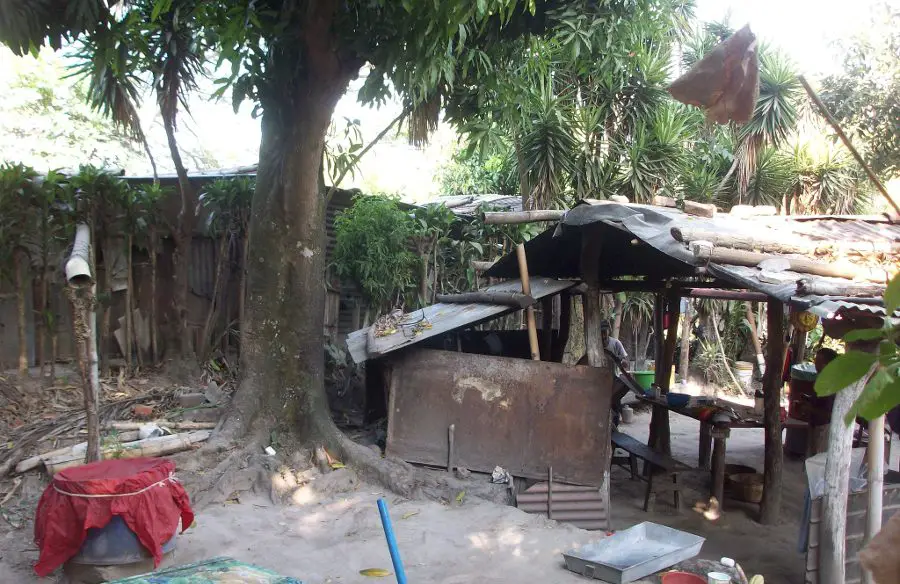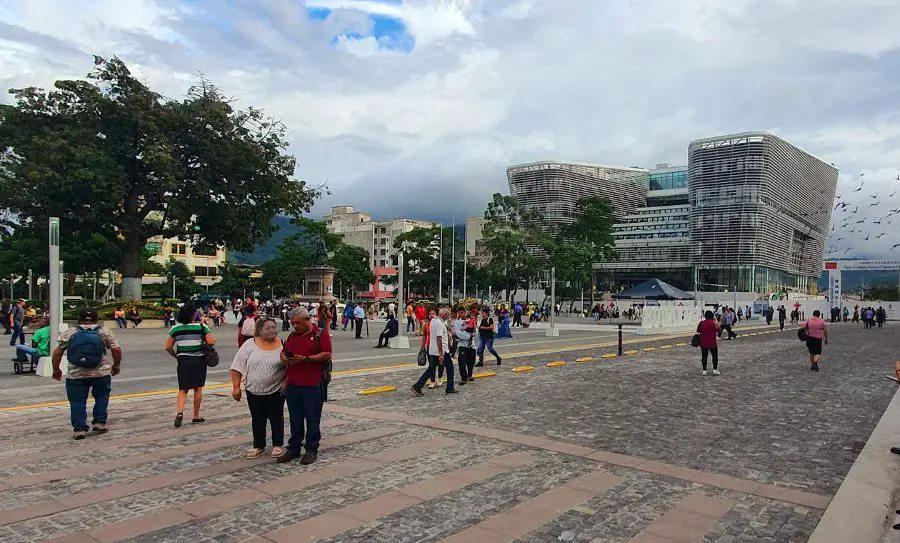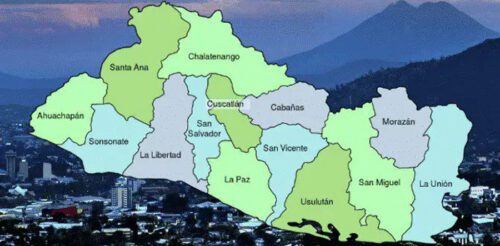Poverty in El Salvador is a complex and pressing issue that has profound implications for the nation’s population. Because of poverty, a significant portion of the country’s citizens grapple with economic hardship, limited access to necessities, and persistent social inequality.
El Salvador’s poverty rate is 26.6 percent, with 18.1 percent of Salvadoran households living in relative poverty and 8.5 in extreme poverty.
According to the Central Reserve Bank of El Salvador BCR, a fourth of El Salvador’s population, or about 6.3 million, struggle to meet their daily necessities because of poverty.

What is El Salvador Poverty Rate?
The poverty rate in El Salvador is 26.6 percent. The rate is based on the percentage of Salvadoran households living on less than $389.05 per month, which is the total cost of the extended basic food basket.
The Salvadoran poverty line for 2022 is based on households with 3.14 members whose income was less than the cost of the extended basic food basket.
For example, the 2022 Salvadoran basic food basket average for a family of 3.14 was $194.52; therefore, the extended basket is $389.05, twice the basic food basket.
Relative poverty applies to households whose income is higher than the cost of the basic food basket but less than the cost of the extended basic basket. Extreme poverty applies to homes whose income is less than the cost of the basic food basket.
| 2015 | 2016 | 2017 | 2018 | 2019 | 2020 | 2021 | 2022 | % Change | |
|---|---|---|---|---|---|---|---|---|---|
| National Poverty Rate | 34.9 | 32.7 | 29.2 | 26.3 | 22.8 | 26.2 | 24.6 | 26.6 | 8.3% ▲ |
| Relative Poverty Rate | 26.8 | 24.8 | 23.0 | 20.6 | 18.3 | 17.6 | 16.8 | 18.1 | 7.4% ▲ |
| Extreme poverty Rate | 8.1 | 7.9 | 6.2 | 5.7 | 4.5 | 8.6 | 7.8 | 8.6 | 10% ▲ |
SEE ALSO: Cost of Living. How expensive is it to live in El Salvador?
The current national poverty rate is 8.3% more than the previous year, with relative poverty increasing by 7.4% and extreme poverty by 10%.
Rural Poverty Rate in El Salvador
The rural Salvadoran poverty rate is 29.6 percent. The poverty rate is based on the percentage of Salvadoran households living on less than $262.45 per month, the 2022 Salvadoran poverty criteria for the rural sector.
The Salvadoran poverty line for rural areas is based on households with 3.27 members whose income is less than the cost of the extended basic food basket.
For instance, the 2022 Salvadoran basic food basket average for a family of 3.27 living in rural areas was $131.23; therefore, the extended basket is $262.45, twice the basic food basket.
| 2015 | 2016 | 2017 | 2018 | 2019 | 2020 | 2021 | 2022 | % Change | |
|---|---|---|---|---|---|---|---|---|---|
| Rural Poverty Rate | 38.8 | 37.5 | 32.1 | 30.0 | 24.8 | 28.5 | 27.0 | 29.6 | 9.6% ▲ |
| Relative Poverty Rate | 28.7 | 27.2 | 24.4 | 22.9 | 19.6 | 17.4 | 16.6 | 18.8 | 13.3% ▲ |
| Extreme poverty Rate | 10.1 | 10.4 | 7.7 | 7.1 | 5.2 | 11.1 | 10.4 | 10.8 | 3.8% ▲ |
In comparison to the previous year, the current poverty rate in rural El Salvador has risen by 9.6%, with relative poverty experiencing a 13.3% increase and extreme poverty growing by 3.8%.
SEE ALSO: The Struggles of Living in Rural Areas of El Salvador.
Urban Poverty Rate in El Salvador
The Salvadoran poverty rate for the urban sector is 24.9 percent; it is based on the percentage of Salvadoran households living on less than $389.05 per month, the 2022 Salvadoran poverty benchmark for the urban sector.
The Salvadoran poverty line for the urban sector is based on households with 3.14 members whose income is less than the cost of the extended basic food basket.
For example, the 2022 Salvadoran basic food basket average for a family of 3.14 living in urban areas was $194.52; therefore, the extended basket is $389.05, twice the basic food basket.
| 2015 | 2016 | 2017 | 2018 | 2019 | 2020 | 2021 | 2022 | % Change | |
|---|---|---|---|---|---|---|---|---|---|
| Urban Poverty Rate | 32.7 | 29.9 | 27.4 | 24.1 | 21.7 | 24.8 | 23.2 | 24.9 | 7.3% ▲ |
| Relative Poverty Rate | 25.7 | 23.5 | 22.2 | 19.2 | 17.5 | 17.8 | 16.9 | 17.6 | 4.1% ▲ |
| Extreme poverty Rate | 7.0 | 6.4 | 5.3 | 4.9 | 4.1 | 7.0 | 6.3 | 7.3 | 15.9% ▲ |
The latest figures reveal a 7.3% rise in the poverty rate in El Salvador’s urban areas compared to the previous year. Relative poverty has increased by 4.1%, while extreme poverty has seen a 15.9% increment during this period.
Why is El Salvador a Poor Country?
El Salvador is poor due to crime and violence, governmental corruption, low levels of education, lack of opportunities, and low Paying Wages. These issues have impacted and continue to affect the daily lives of Salvadorans looking to escape poverty.
Crime and Violence
One of the main reasons El Salvador continues to have a high poverty rate in 2023 is crime and violence. Even though crime and violence in 2023 are at the lowest levels in over 30 years, the impact it had in the daily lives of most Salvadorans, especially those living in poverty, continues.
Most families or individuals living in poverty could only afford to reside in areas with high crime and violence numbers. Living in these areas meant having less access to employment and proper education.
These areas with high poverty levels had and continue to have a hard time attracting new businesses or investors; therefore, the unemployment numbers in these areas continue to be higher than in safer locations.
Education is also affected by crime and violence. Fear of crime discouraged parents and children from attending high school and enrolling in universities.
Compared to previous years, claims of crime and violence in El Salvador are down in 2023. However, it will take time for better employment and education resources to reach these areas.
In summary, crime and violence prevented many people from gaining proper employment and education; that continues today, even with improved security. This issue keeps the poverty cycle alive.
Governmental Corruption
Corruption by public officials has affected the levels of poverty in El Salvador. Over the last 25 or more years, the nation has experienced numerous corruption cases involving government officials.
This public money could have been utilized to help people out of poverty; nonetheless, the money ended up in the possession of degenerate public officials who used it to enrich themselves and their families.
A blatant example of corruption by Salvadoran public officials at the highest level is that the last four presidents have had legal problems related to money laundering and corruption.
Two of ARENA’s ex-presidents had legal issues concerning corruption. Ex-president Paco Flores died while on house arrest awaiting trial, and ex-president Tony Saca is serving time in Jail for taking public funds for personal gain.
Additionally, the last two ex-presidents, both belonging to the FMLN political party, are dealing with corruption cases. Mauricio Funes and Salvador Sanchez Ceren have been accused of corruption by Salvadoran authorities; they are now living in Nicaragua, avoiding Salvadoran Justice.
All the money stolen by these four Government officials, and many others, could have helped reduce the poverty levels in El Salvador.
Low Levels of Education
Low levels of education help keep the poverty cycle alive in a country with a weak education system. According to Unicef, less than 50 percent of Salvadorans graduate from the sixth grade. Also, only one out of three complete the ninth grade, and one out of five graduate from high school.
Getting the proper education in impoverished communities or living in poverty is challenging. Many people don’t prioritize education for themselves or their children; also, many don’t have the financial means for education. Life in El Salvador’s rural areas is challenging.
Furthermore, getting teachers to go to teach in these areas is not easy. Teachers fear getting attacked or extorted by criminal organizations just for venturing into these communities.
Another issue with education in impoverished communities is student attendance. Some parents don’t allow their kids to attend school because they fear they could be attacked by gangs or forced to join them.
Furthermore, a few children are not permitted to sign up for school because their parents need them to work to help the family.
With minimal levels of education, these children will miss future opportunities that may help them and their families break free from the clutches of poverty.
Lack of Opportunities
Lack of opportunities is another factor that keeps the Salvadoran poverty cycle going. There are limited options in the country for getting high-paying jobs.
Some employers will hesitate to hire an individual based on the location the person lives. Furthermore, job opportunities near poverty-stricken areas are limited, and they don’t pay as well.
The lack of opportunities for acquiring a high-paying job is not a problem only in impoverished areas; this problem affects all Salvadorans, even those with college degrees.

Low Paying Wages
The highest minimum wage in El Salvador is $365.00 per month. However, to earn this minimum wage, people most likely need a college degree or have another skill, such as being bilingual.
Even if a person living in poverty can get a job that pays the Salvadoran minimum wage, it is not enough to get them out of poverty. The Salvadoran minimum wage is so low that it hardly covers the essential cost of living.
These wages get even worse for those with a low level of education or those in rural areas. Low wages are another reason El Salvador has a high poverty rate.
Effects of Poverty on Crime and Migration
The effects of poverty on migration and crime are evident all over El Salvador. Over the last 30 years, the country has seen people migrating from rural areas or small towns to larger cities or different countries.
Also, the number of youths from poverty-stricken communities who have died or gone to jail for illicit activities is alarming. Many individuals, especially youth, see criminal activities as a way out of poverty; they don’t realize the consequences of choosing this route.
Family displacement or forced migration is another result of poverty in El Salvador. Families from impoverished gang-infested communities leave to protect their families or start fresh in a new location.
SEE ALSO: Despite better security, Salvadorans still migrating in 2023.
Poverty in El Salvador is one of the main reasons numerous Salvadorans hope to move to different nations in North America or Europe.
El Salvador Poverty in Rural Areas
Poverty is a big problem in El Salvador but is worse in rural areas. Almost 45 percent of Salvadorans live in areas deemed rural, where the poverty rate is always higher.
Most people living in rural areas of El Salvador work informally in the agricultural and farming sectors; both industries pay low wages.
Another problem facing rural El Salvador that keeps poverty alive is the lack of access to proper education. Most schools in rural areas only teach until the 6th grade.
SEE ALSO: El Salvador’s challenges and concerns: What Concerns Salvadorans the most?
In El Salvador, as in other Central American countries, rural areas continue to be the face of poverty.
What Should the Government Do?
Now that the country’s security has improved, the government needs to create opportunities for individuals currently living in poverty to get better jobs and get a better education.
Also, the education system needs to change to allow the new generations to get better educated and start critical thinking, so they will likely never live in poverty.
Lastly, the Salvadoran minimum wage needs to increase to levels that allow families and individuals to get ahead financially. The current minimum wages are barely enough to survive.

In conclusion, poverty in El Salvador remains a formidable obstacle to progress and prosperity. To overcome this poverty problem, concerted efforts are needed at both the policy and community levels, aiming to empower individuals, enhance opportunities, and create a brighter future for all Salvadorans.

 Downtown San Salvador
Downtown San Salvador

